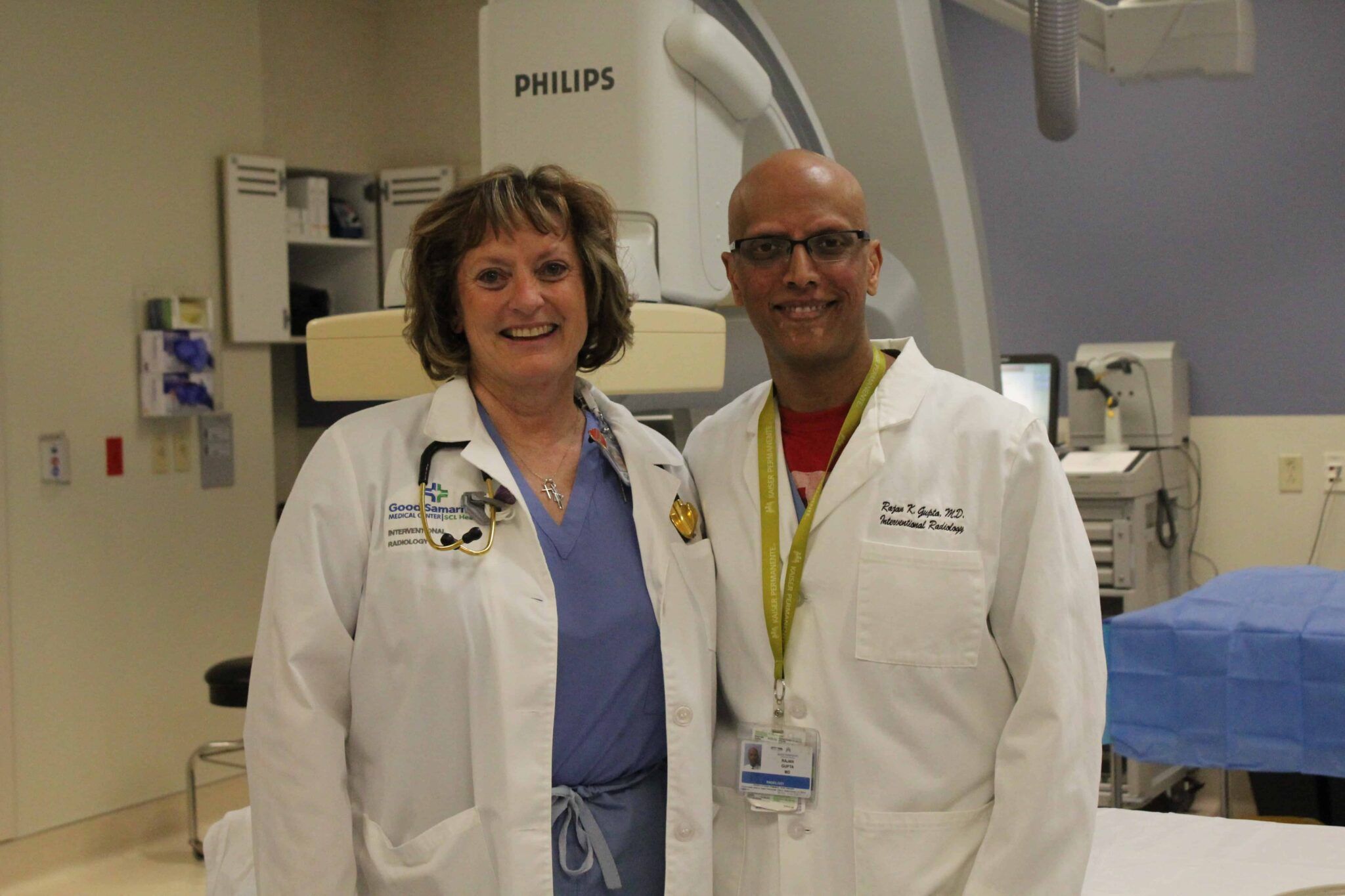Good Sam treatment targets liver cancer


LAFAYETTE — In January, Good Samaritan Medical Center completed its first procedure that uses a specific type of high level radiation to treat a patient with colorectal cancer that has spread to the liver.
The radioembolization procedure delivers a radioactive isotope directly into tumors in the liver. It has shown promise for treating liver cancer with reduced side effects of traditional treatments like chemotherapy, for helping patients maintain a higher quality of life and for potentially helping extend the length of their lives.
The procedure, which has been approved since the early 2000s, has gained a lot of attention for cancers that originate in or have spread to the liver, according to Dr. Rajan Gupta, medical director of interventional radiology at Good Samaritan Medical Center. Because the treatment uses the radioactive isotope yttrium, it is referred to as Y-90.
SPONSORED CONTENT
Gupta collaborated with Dr. Emerson Sharpe and the interventional radiology and nuclear medicine team to complete the minimally invasive procedure in January at Good Samaritan. The treatment is considered when there is a limited possibility for tumors in the liver to be surgically removed, and a patient isn’t responding to chemo.
“There are about 300 centers in the U.S. that do this and five to 10 in Colorado,” Gupta said. Using Y-90 requires an institutional license because nuclear pharmaceuticals are highly regulated.
Good Samaritan received the license in December about eight months after starting the process. “An authorized user is required to order a dose,” Gupta said. Since successfully completing the first procedure in January, four more Y-90 treatments have already been scheduled.
Amy Kreeger, nurse practitioner for interventional radiology, worked with Gupta and Sharpe and the team to get this first patient ready for the Y-90 procedure. She described the patient as nervous initially but doing well now. Lab work and scans will be done three months after the procedure to determine results.
“We had to work with the state to get the license and had in-services to get procedures mapped out and ready to go,” Kreeger said. She also helped train the staff on the process.
Cancer is the second leading cause of death in the United States, and colorectal cancer is the second leading cause of those cancer-related deaths according the U.S. Cancer Statistics Working Group. In a broader study, liver cancer is the leading cause of cancer deaths worldwide, according to the American Cancer Society.
Research shows that the primary site where certain cancers originate often determines the pattern the cells will follow if they spread in a body. The relationship between colorectal cancer and liver cancer is that the liver is one of the earlier and most common places colorectal cancer spreads, according to Gupta.
“Chemo is a fairly effective mode of treatment but each round can be less effective,” he said. “Y-90 in colorectal cancer is effective when chemo isn’t controlling the liver disease.”
Another advantage is that the procedure spares tissue that’s not targeted. Through the process, microscopic hollow spheres are placed inside the blood vessels that feed a tumor to block the supply of blood to the cancer cells. When Y-90 fills the spheres, they get lodged at the tumor site and deliver a high dose of radiation to the tumor and not to normal tissues.
Whereas Y-90 treatment was originally delivered to patients who were hospitalized, it is now a two- or three-step outpatient procedure. Step one involves mapping out arteries to the liver from the groin area.
After evaluating information from the diagnostic tracer, doctors determine the proper Y-90 dose and deliver it at the next outpatient appointment. If another dose is required to target additional tumors, another appointment is set.
Some people may feel fatigue and low-grade flu symptoms afterward but it doesn’t make them feel sick like chemo can.
A global study looked at the potential benefit for Y-90 to be given earlier in liver cancer treatment as a first-line procedure like chemo. “The study showed it was well tolerated and safe and controlled cancer in the liver but it didn’t improve overall survival,” Gupta said.
Each dose of Y-90 costs about $15,000, he said. “Chemo and particle therapy (a form of external beam radiotherapy) are effective in a handful of treatments — they’re cheaper but more toxic and negatively affect quality of life.”
“Emerging data shows that this has a well-established role for people who aren’t responding to chemo,” Gupta said. “As data comes out over the next five years, I think we’ll be using this more and more to help people and to help them maintain quality of life.”
Currently Y-90 is used only when cancer is in or has spread to the liver. There’s very little data for using it on other cancers at this point, according to Gupta.
In February 2000, President Bill Clinton dedicated March as National Colorectal Cancer Awareness Month.
_____________________________________________
See additional health care stories from BizWest’s March 2018 edition:
BCH integrates behavioral, physical health
Community colleges seek to add BSN degree

LAFAYETTE — In January, Good Samaritan Medical Center completed its first procedure that uses a specific type of high level radiation to treat a patient with colorectal cancer that has spread to the liver.
The radioembolization procedure delivers…
THIS ARTICLE IS FOR SUBSCRIBERS ONLY
Continue reading for less than $3 per week!
Get a month of award-winning local business news, trends and insights
Access award-winning content today!
